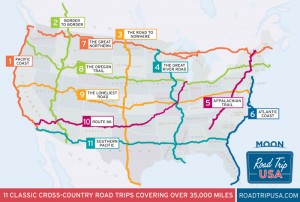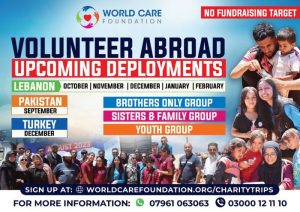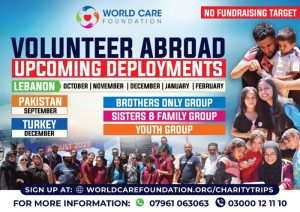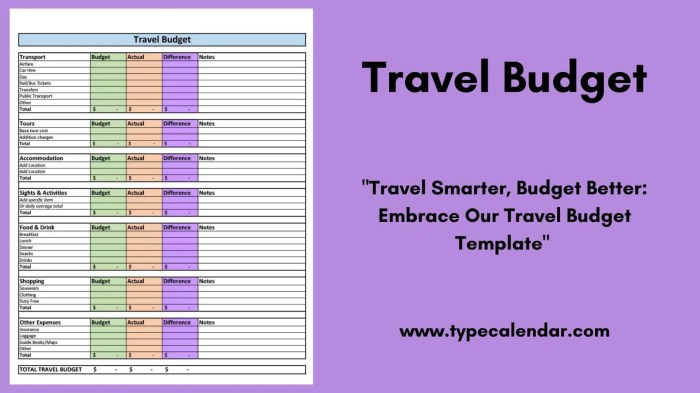
Group travel on a budget doesn’t mean sacrificing fun; it means maximizing experiences while minimizing expenses. This guide explores practical strategies for planning affordable group trips, from finding the best flight and accommodation deals to optimizing spending on food, activities, and transportation. We’ll delve into various travel modes, unique accommodation options, and money-saving hacks to ensure your group adventure is both memorable and budget-friendly.
Whether you’re planning a weekend getaway or an extended vacation, careful planning is key. We’ll cover everything from creating a detailed budget and negotiating group discounts to utilizing free or low-cost activities and effectively managing shared funds. Learn how to leverage technology, explore alternative travel options, and navigate the complexities of group travel logistics to create an unforgettable experience without breaking the bank.
Flight Deals and Hacks: Group Travel On A Budget

Securing affordable flights is crucial for budget-conscious group travel. This section details strategies and resources to help you find the best flight deals, minimizing airfare costs and maximizing your travel budget. We’ll explore various websites, techniques, and considerations to help you navigate the complexities of flight booking.
Flight Deal Alert Websites and Price Tracking Tools
Several websites and tools specialize in providing flight deal alerts and price tracking. Utilizing these resources can significantly improve your chances of finding the lowest fares. These tools monitor prices across various airlines and automatically notify you of price drops or sales.
- Google Flights: Google Flights offers a powerful search engine with flexible date options and price tracking capabilities. It allows you to set price alerts and explore different airports within a certain radius.
- Skyscanner: Skyscanner is another popular flight comparison website known for its comprehensive search capabilities and ability to find deals on less-conventional routes.
- Kayak: Kayak aggregates flight prices from multiple sources, providing a broad overview of available options. It also offers price alerts and tools to track price changes over time.
- Momondo: Similar to Kayak and Skyscanner, Momondo searches across a wide range of airlines and travel agencies, offering a comprehensive comparison of flight prices.
- Hopper: Hopper uses predictive analytics to forecast flight prices, suggesting the best time to book for optimal savings. It also provides price alerts and booking recommendations.
Techniques for Finding the Cheapest Flights
Finding the cheapest flights often involves employing several techniques in combination. Consistency and strategic planning are key to securing the best deals.
Using incognito mode (or a private browsing window) prevents websites from tracking your search history and potentially inflating prices based on your previous searches. Setting price alerts through the websites mentioned above allows you to receive notifications when prices drop, enabling you to book at the most opportune moment. Consider booking flights during off-peak seasons or on weekdays, as these times typically offer lower fares.
Utilizing Flexible Travel Dates and Alternative Airports
Flexibility is your greatest ally when hunting for cheap flights. Being flexible with your travel dates, even by a few days, can significantly reduce the cost of your airfare. Mid-week flights (Tuesdays and Wednesdays) are often cheaper than weekend flights. Similarly, considering alternative airports near your origin and destination can unlock unexpected savings. Flying into a smaller, less popular airport might require additional ground transportation, but the savings on the flight itself can often outweigh this added expense.
Flight Booking Website Comparison
The following table compares popular flight booking websites based on price, features, and reliability. Note that prices can fluctuate, and the “best” website will depend on your specific travel needs and dates.
| Website | Price Competitiveness | Features | Reliability |
|---|---|---|---|
| Google Flights | High | Price tracking, flexible date search, map view | High |
| Skyscanner | High | Wide range of airlines, calendar view | High |
| Kayak | High | Price comparison, hotel and car rental options | High |
| Momondo | High | Comprehensive search, price alerts | High |
| Hopper | Moderate | Price prediction, booking recommendations | Moderate |
Train Travel Guides
Train travel offers a unique blend of adventure and relaxation, often providing a more scenic and comfortable journey than other modes of transportation. This guide will equip you with the knowledge and tips needed to plan and execute budget-friendly train trips across various regions.
Booking Train Tickets Strategically
Booking train tickets in advance is generally recommended, especially during peak seasons or for popular routes. Many railway companies offer online booking systems with discounts for early purchases. Consider using comparison websites to find the best deals across different providers. Be sure to check for any potential student, senior, or group discounts that might apply. Flexibility with your travel dates can also significantly impact the price; mid-week travel is often cheaper than weekend travel.
Remember to carefully review the ticket conditions, including cancellation policies, before finalizing your purchase.
Choosing the Right Train Class
The choice of train class directly impacts your comfort and cost. First-class carriages usually offer more spacious seating, enhanced amenities like Wi-Fi and onboard meals, and potentially a more relaxed atmosphere. Second-class is a more budget-friendly option, often still providing comfortable seating and a pleasant journey. Third-class, where it exists, is typically the most basic option, but can still be a viable choice for short journeys or those prioritizing cost above all else.
Consider the length of your journey when selecting a class; a longer trip might justify the extra cost of a higher class for increased comfort.
Efficient Packing for Train Travel
Packing light is crucial for train travel, especially if you plan on changing trains or navigating crowded platforms. A comfortable backpack or small suitcase is ideal. Prioritize essential items like toiletries, medications, and any necessary electronics. Consider layering your clothing to adapt to changing temperatures on the train or at your destination. Remember to check the baggage allowance of your chosen railway company to avoid extra charges.
Experiences in Different Countries
My experiences with train travel across Europe have been overwhelmingly positive. High-speed trains in France and Germany, for example, offer exceptional comfort and speed, allowing for efficient travel between major cities. In contrast, slower regional trains in Italy, while less efficient, offer a charming way to experience the countryside. Train travel in Southeast Asia, while often less comfortable than in Europe, provides a unique cultural immersion, offering glimpses into daily life along the route.
However, punctuality can be less reliable in some regions, necessitating flexibility in your travel plans.
Train Travel vs. Other Transportation Modes
| Mode of Transportation | Cost | Time | Comfort |
|---|---|---|---|
| Train | Moderate (varies by class and distance) | Moderate (faster than bus, slower than plane) | Moderate to High (depending on class) |
| Bus | Low | Slow | Low to Moderate |
| Plane | High | Fast | Moderate |
Sample Train Itinerary: A Swiss Adventure
This itinerary focuses on a scenic train journey through Switzerland, highlighting key stops and attractions. The trip begins in Zurich, continuing to Interlaken, then Lucerne, before returning to Zurich. In Zurich, explore the Old Town, visit the Swiss National Museum, and enjoy the vibrant city life. Interlaken offers breathtaking views of the Alps and opportunities for hiking, paragliding, or boat trips on Lake Thun or Lake Brienz.
Lucerne boasts a charming medieval old town, the iconic Chapel Bridge, and stunning lake views. This itinerary can be adapted to suit individual interests and time constraints. Remember to book accommodations and activities in advance, especially during peak tourist season.
Cruise Ship Reviews and Tips
Planning a cruise can be an exciting prospect, offering a unique blend of relaxation, adventure, and cultural immersion. However, navigating the world of cruise lines and understanding the associated costs is crucial for ensuring a budget-friendly and enjoyable experience. This section provides a comparative overview of different cruise lines, focusing on value, practical tips for cost savings, and guidance on selecting the right itinerary.
Comparative Review of Cruise Lines
Several cruise lines cater to various budgets and preferences. Carnival Cruise Line and Royal Caribbean International often offer competitive pricing and a wide array of onboard activities, making them popular choices for budget-conscious travelers. However, their larger ship sizes might mean more crowds. Norwegian Cruise Line is known for its flexible dining options and freestyle cruising, appealing to those seeking more independence.
Disney Cruise Line, while significantly more expensive, provides an immersive experience tailored to families with young children. Choosing a line depends heavily on individual priorities: a balance of price, amenities, and the overall atmosphere. For instance, a couple seeking a romantic getaway might prioritize a smaller, more luxurious line like Oceania Cruises, while a family with young children might prefer the family-focused entertainment and amenities of Disney Cruise Line.
Tips for Saving Money on Cruise Ship Expenses
Minimizing onboard expenses is key to a budget-friendly cruise. Pre-booking shore excursions directly with local tour operators rather than through the cruise line can lead to substantial savings. Similarly, taking advantage of free onboard activities, such as poolside games or deck parties, can help avoid unnecessary spending. Packing snacks and drinks (within the cruise line’s guidelines) can also reduce reliance on more expensive onboard purchases.
Consider opting for the cruise line’s drink packages only if you anticipate consuming a significant amount of beverages, as the cost savings might not always outweigh the package price. Finally, carefully reviewing onboard charges daily can prevent unexpected surprises at the end of the voyage.
Choosing the Right Cruise Itinerary Based on Budget and Interests
Selecting an itinerary aligned with your budget and interests is crucial. Shorter cruises generally cost less than longer voyages. Cruises to less popular destinations or during the off-season often offer lower prices. If your primary interest is relaxation, a cruise to a tropical island destination might be ideal. For history buffs, a Mediterranean cruise might be more appealing.
Adventure seekers might consider cruises that include hiking or water sports excursions. Matching the itinerary to your preferences will enhance your overall enjoyment while potentially reducing unnecessary expenses on activities that don’t align with your interests.
Typical Cruise Vacation Costs
The cost of a cruise vacation varies significantly depending on several factors. The following table provides a general estimate for a 7-day cruise for two adults:
| Expense Category | Estimated Cost | Notes |
|---|---|---|
| Cruise Fare (per person) | $700 – $2000 | Varies greatly depending on cabin type, cruise line, and itinerary. |
| Onboard Expenses (per person) | $200 – $500 | Includes drinks, gratuities, specialty dining, and onboard activities. |
| Shore Excursions (per person) | $100 – $300 | Depends on the number and type of excursions chosen. |
| Travel to/from Port (per person) | $100 – $500 | Flights, transportation to the port, etc. |
| Miscellaneous Expenses (per person) | $50 – $150 | Souvenirs, tips beyond gratuities, etc. |
Note: These are estimates and can vary widely. Always factor in additional costs like travel insurance.
Road Trip Guides
Embarking on a road trip offers unparalleled freedom and adventure, allowing you to explore at your own pace and discover hidden gems along the way. Careful planning, however, is crucial to ensure a smooth and enjoyable journey, especially when traveling on a budget. This guide provides a comprehensive overview of road trip planning, from initial route selection to maximizing your savings and utilizing helpful resources.
Route Planning and Itinerary Creation
Effective route planning is fundamental to a successful road trip. Begin by identifying your desired destination and the overall timeframe for your journey. Utilize online mapping tools like Google Maps or similar services to plot a potential route, considering factors such as distance, driving time, and points of interest along the way. Break down the journey into manageable daily segments, allowing for ample time to explore each location without feeling rushed.
A well-structured itinerary helps optimize your time and ensures you don’t miss key attractions. For example, a trip from New York City to Los Angeles could be broken down into weekly segments, each focusing on a specific region with planned overnight stops.
Budgeting for a Road Trip
Budgeting is paramount for a cost-effective road trip. Start by estimating fuel costs based on your chosen route and vehicle’s fuel efficiency. Consider using fuel-efficient driving techniques to minimize consumption. Factor in accommodation expenses, opting for budget-friendly options like camping, hostels, or budget hotels. Allocate funds for food, prioritizing grocery shopping over frequent restaurant meals.
Include a contingency fund for unforeseen expenses, such as car repairs or unexpected delays. For example, a 2,000-mile road trip might require a fuel budget of $300-$500 depending on gas prices and vehicle type, while accommodation could be budgeted at $50-$100 per night depending on the chosen lodging.
Saving Money on Gas, Accommodation, and Food, Group travel on a budget
Several strategies can significantly reduce road trip expenses. Driving at consistent speeds, avoiding aggressive acceleration and braking, and maintaining proper tire inflation can improve fuel efficiency. Consider utilizing apps like GasBuddy to locate the cheapest gas stations along your route. For accommodation, explore options like Airbnb or VRBO for potentially cheaper rates than traditional hotels. Packing your own meals and snacks minimizes reliance on expensive roadside restaurants.
Utilizing loyalty programs and discounts for gas, hotels, and grocery stores can also generate savings. For example, utilizing a grocery store rewards card can provide savings on essential items for meals, and staying at a motel with a weekly rate can save compared to paying per night.
Utilizing Apps and Websites for Roadside Attractions
Numerous apps and websites can enhance your road trip experience by providing information on roadside attractions, activities, and points of interest. Roadtrippers, for example, allows you to create custom routes and discover hidden gems along the way. Google Maps offers detailed information on various locations, including reviews and user-generated content. TripAdvisor provides comprehensive reviews and ratings of attractions, restaurants, and accommodations.
Using these tools ensures you make the most of your journey and discover unexpected highlights.
Sample Road Trip Itinerary: Pacific Coast Highway
This itinerary focuses on a 10-day road trip along the iconic Pacific Coast Highway (PCH) in California.Day 1-2: Los Angeles – Explore Hollywood, Santa Monica Pier, and Griffith Observatory.Day 3-4: Big Sur – Drive the scenic 1 Highway, visit Pfeiffer Big Sur State Park, and enjoy the breathtaking coastal views.Day 5-6: Monterey & Carmel – Explore Monterey Bay Aquarium, stroll through the charming town of Carmel-by-the-Sea, and visit 17-Mile Drive.Day 7-8: San Simeon – Visit Hearst Castle, a stunning historical landmark, and enjoy the coastal scenery.Day 9-10: San Francisco – Explore Golden Gate Bridge, Alcatraz Island, Fisherman’s Wharf, and other iconic San Francisco landmarks.This itinerary can be adjusted based on personal preferences and available time.
It highlights the diverse attractions along the PCH, from bustling cities to tranquil natural landscapes.
Packing Essentials for a Road Trip
Proper packing is crucial for a comfortable and stress-free road trip. Essential items include comfortable clothing suitable for various weather conditions, sturdy walking shoes, toiletries, medications, a first-aid kit, maps or GPS device, a cooler for food and drinks, and entertainment for the journey (books, music, etc.). Consider a portable charger for electronic devices and a multi-tool for minor repairs.
Packing light reduces luggage handling and improves vehicle fuel efficiency. For example, instead of packing multiple pairs of shoes, select a versatile pair suitable for walking and casual occasions.
Budget Accommodation Tips
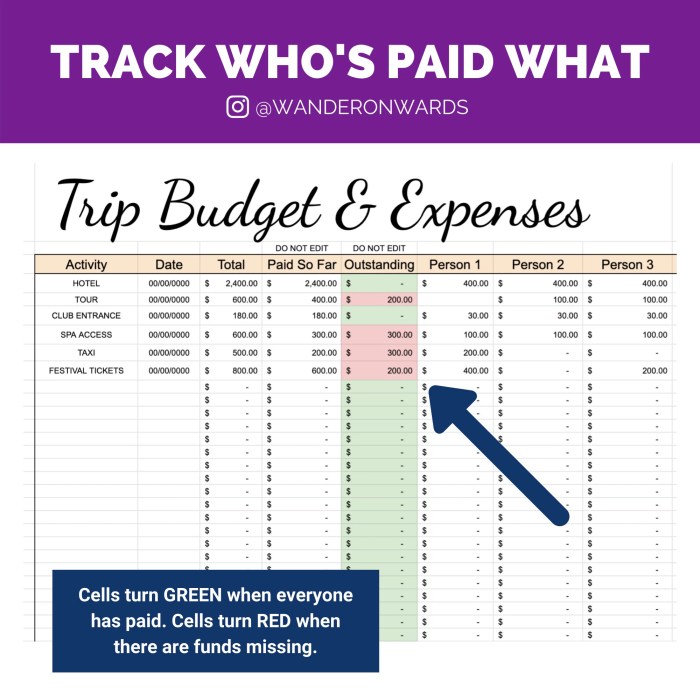
Finding affordable accommodation is crucial for budget-conscious travelers. This section provides a comprehensive guide to securing comfortable and cost-effective lodging options, encompassing various strategies and resources. Understanding the nuances of different accommodation types and employing effective booking techniques can significantly reduce travel expenses.
Types of Budget Accommodation
Budget travelers have a variety of options beyond expensive hotels. Each type offers unique advantages and disadvantages depending on individual preferences and travel style. Careful consideration of these factors will help you choose the best fit for your needs.
| Accommodation Type | Pros | Cons |
|---|---|---|
| Hostels | Very affordable, social atmosphere, often in central locations, communal areas. | Shared rooms and facilities, potential noise, less privacy. |
| Guesthouses | More privacy than hostels, often family-run, personalized service, home-cooked meals sometimes available. | Can be more expensive than hostels, availability may be limited, less amenities. |
| Budget Hotels | Private rooms and bathrooms, basic amenities, often chain hotels offering consistent quality. | More expensive than hostels and guesthouses, may be located further from city centers. |
| Airbnb/VRBO | Variety of options (apartments, houses), often more space than hotels, kitchen facilities, local experience. | Prices can vary widely, potential for scams, cleaning fees can add to the cost. |
Negotiating Lower Prices
Negotiating accommodation prices, particularly in guesthouses and smaller hotels, can yield significant savings. Directly contacting establishments instead of relying solely on online booking platforms often allows for more flexibility.
For example, booking during the off-season or on weekdays can lead to lower rates. Mentioning a longer stay can also encourage discounts. Politely inquiring about any available discounts or special offers is always worthwhile. Be prepared to compare prices from multiple sources to strengthen your negotiating position.
Using Websites and Apps to Compare Prices
Several websites and apps specialize in comparing accommodation prices across various platforms. These tools help identify the best deals available, ensuring you don’t overpay.
Popular examples include Kayak, Expedia, Booking.com, and Google Hotels. These platforms allow you to filter results by price, location, amenities, and guest ratings. Using price comparison websites is crucial for finding the best value for your money and avoiding hidden fees.
Ultimately, successful budget group travel hinges on meticulous planning, flexible approaches, and a willingness to explore diverse options. By implementing the strategies Artikeld in this guide, you can significantly reduce travel costs without compromising on the quality of your experience. Remember, the key is to prioritize your needs, research thoroughly, and embrace the adventure of collaborative travel planning. The memories made on a budget-friendly group trip can be just as enriching, if not more so, than those from a lavish, independently funded journey.
Expert Answers
How can I handle disagreements within the group regarding spending?
Establish clear budgeting guidelines and communication channels before the trip. Openly discuss spending limits and expectations. Consider using a shared expense tracking app to maintain transparency and accountability.
What if someone in the group cancels their trip?
Purchase comprehensive travel insurance that covers cancellations. Review your booking policies for potential refunds or adjustments. Communicate openly with the group and explore options for redistributing costs or finding a replacement traveler.
How do I ensure everyone in the group has travel insurance?
Designate a group leader responsible for communicating insurance requirements. Provide resources and comparison tools for group members to choose their own plans, ensuring coverage aligns with the trip’s specifics.
What are some ways to avoid overspending on souvenirs?
Set a souvenir budget before the trip. Focus on experiences rather than material possessions. Look for unique and affordable souvenirs at local markets or create DIY mementos to remember your journey.

